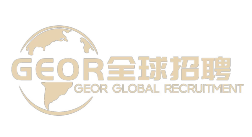Foreign Art Teacher Recruitment: An Analysis of the Core Elements of Constructing an International Art Education Ecology
Recruitment of foreign art teachers: an analysis of the core elements of building an international art education ecology
Under the trend of globalization of art education, the introduction of foreign art teachers has become an important way to enhance curriculum innovation and broaden students 'international vision. Such teachers not only need to have solid professional skills, but also need to assume the role of cultural bridge. The following is a systematic review of the key framework for the recruitment of foreign art teachers from the three dimensions of recruitment standards, cultural integration and teaching innovation.
1. precise positioning: building a multi-dimensional screening system
- mandatory requirements for professional qualifications
- educational background :
give priority to graduates majoring in visual arts, pure arts or art education from art colleges (such as Rhode Island School of Design and Central St. Martin), and provide official transcripts and degree certification documents. - practical experience :< br/> requires more than 3 years of full-time teaching experience, or cross-border practical background such as art curation and studio operation (portfolio and project cases are required).
- language ability :
English is a necessary teaching language (IELTS 6.5 or equivalent is required). mastering a second foreign language (such as Spanish and French) is preferred to adapt to multilingual teaching scenarios.
- soft matching of teaching style
- educational concept :< br/> through situational interview questions to investigate the candidates' practice of "process-oriented art education", "interdisciplinary integration" and other concepts, for example: "How to design a sculpture class that combines ecological issues?"
- classroom management :
simulated teaching scenarios to evaluate their ability to deal with students' creative differences, material safety and other issues, focusing on skills such as "guided questioning" and "personalized feedback.
2. cultural integration: create an inclusive working environment
- induction adaptation support system
- cultural transition package :< br/> provide customized materials such as "interpretation of Chinese art education policy" and "overview of local art traditions" to help teachers quickly understand the teaching context.
- tutor system :
senior Chinese art teachers are arranged as "cultural partners" to conduct teaching observation and feedback once a week to help solve the problem of curriculum localization.
- sustainable development mechanism
- cross-cultural teaching and research :
organize a monthly workshop on "dialogue between Chinese and foreign art education" to explore the differences and integration of color theories and composition principles between the east and the west. - creation support plan :
set up a special fund to support foreign teachers to participate in local art residence projects and encourage them to integrate intangible cultural heritage skills (such as tie-dyeing and seal cutting) into modern art creation.
3. teaching innovation: activate curriculum vitality
- curriculum system design principles
- thematic unit teaching :< br/> teachers are required to integrate multiple media such as sketch, digital art and installation art with interdisciplinary themes such as "urban memory" and "future ecology" as clues.
- process evaluation system :
abandon single work scoring, adopt the three-dimensional evaluation mode of "creation log + peer mutual evaluation + teacher feedback", and focus on recording the development track of students' thinking.
- technology enabling practice
- digital tool application :< br/> give priority to the recruitment of digital authoring software that can skillfully use Procreate, Blender, etc, or candidates with VR/AR art teaching experience.
- online resource integration :
encourage teachers to build a global art resource library and introduce online exhibitions from the Metropolitan Museum of Art, Tate Modern and other institutions as teaching materials.
4. compliance management: avoid potential risks
- key points of qualification examination
- work permit :< br/> confirm that the candidate holds the "foreigner work permit" (art) and art residence permit, and avoid using tourist visa to engage in teaching activities.
- Health and Safety :< br/> Require a health certificate (including infectious disease screening) issued by an overseas medical institution and purchase commercial insurance covering special risks such as allergies to art materials.
- contract clause design
- intellectual property ownership :< br/> make it clear that the curriculum development results belong to the school, teachers have the right of signature and reasonable remuneration, and avoid subsequent copyright disputes.
- cultural adaptation clause :
set a 3-month probation period, during which the school has the right to adjust the job arrangement or terminate the contract according to the teacher's cultural integration.
5. Case: Successful Practice of an International School
a K12 international school realizes the efficient operation of the foreign art teacher team through the following strategies:
- hierarchical recruitment :
basic course teachers focus on technical teaching ability, elective course teachers emphasize artistic innovation vision, and form the complementarity of skills and ideas. - dynamic evaluation :
student satisfaction survey (weight 40%), teaching innovation case evaluation (30%) and cross-cultural contribution evaluation (30%) are carried out every semester, and the results are linked to renewal. - cultural output :
support foreign teachers to hold "international art week" to show students' cross-border works integrating Dunhuang murals and street art, so as to enhance the brand influence of the school.
The essence of recruiting foreign art teachers is to build a symbiotic system of "global art wisdom + local education ecology. Educational institutions need to go beyond simple "language + skills" combinations and focus on teachers' cultural sensitivity, innovation sustainability and willingness to integrate ecologically. In the future, with the popularization of AI art generation tools, this position will focus more on the emotional guidance and critical thinking training value of human teachers, and the recruitment standards will need to be upgraded iteratively.
